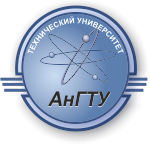Рассмотрены особенности добычи нефти на фонтанирующих скважинах, способы утилизации попутного нефтяного газа. Предложена система автоматического регулирования давления в нефтегазовом сепараторе с использованием регулируемого электропривода для управления положением заслонки, управляющей объемом нефтегазовой смеси
нефть, добыча, попутный нефтяной газ, сепаратор, частотно-регулируемый электропривод
Oil production is an important component of the state's export potential. Improving the technologies for its extraction and primary processing increases the ability of oil fields to obtain commercial oil suitable for further use, transportation and processing at petrochemical enterprises. Oil pumped out of a well almost always contains associated gas, which must be utilized. Associated petroleum gas (APG) is a natural hydrocarbon gas (a mixture of gases and vaporous hydrocarbon and non-hydrocarbon components), dissolved in oil or located in the “caps” of oil and gas condensate fields. APG is a by-product of oil production.
Flowing wells often operate unstably and some mechanized wells operate in periodic pumping mode. It is necessary to maintain a certain pressure in the separator for safe operation and a liquid level in the separator to avoid oil overflow to the development barn. Therefore, this process requires great care, constant monitoring and regulation of the separation system by operating personnel. These works are performed using manual regulation of gas flow using shut-off valves. This is a very resource-intensive process, since it involves the constant presence of a person at the well pad [1].
The pressure reduction at the outlet from the well pad is carried out by regulating throttles, which introduce additional resistance to the flow of discharged APG. This method requires the presence of a technological reserve (for throttling) in terms of outlet pressure relative to the maximum permissible pressure in the subsequent pipeline [2]. This method of pressure regulation is most widespread in the pipeline transport of oil and petroleum products. Based on the above, it is most advisable to maintain and regulate pressure by throttling.
Oil and gas separators are used at oil field enterprises, at oil pre-treatment and water discharge installations in automatic group metering installations, etc.
The automatic pressure control system is designed to maintain the pressure at the inlet of the separation unit (SU) no less than the set value, ensuring the cavitation reserve and the pressure at the outlet of the CS no more than the set value, ensuring the safety of the pipeline and the requirements of the oil products pumping mode, as well as for maximum APG discharge and combustion. Regulation is carried out using control throttles. The dampers are controlled by a rotary mechanism by using an asynchronous electric motor using a frequency converter [3].
The implementation of the proposed automation scheme is presented in the form of introducing a variable-frequency electric drive to regulate the position of the control valve. This technical solution will eliminate the subjective factors that arise during manual control. Organizing a control loop based on the position of the throttle valve will establish control over the state of the technological process of separating the oil emulsion and improve the quality of separation into fractions.
1. Gumerov A.G., Gumerov R.S., Akberdin A.M. Operation of equipment at oil pumping stations. – M.: Nedra-Business Center LLC, 2011. – 475 p.
2. Goshko A.I. Pipeline fittings for specific purposes. Choice. Exploitation. Repair - M.: Mechanical Engineering, 2003. – 432 p.
3. Arsentyev O.V., Konovalov Yu.V. Features of the design of frequency-controlled asynchronous motors: Collection of scientific works of the Angarsk State Technical Academy. – Angarsk: AGTA Publishing House, 2007. – P. 90-92.








